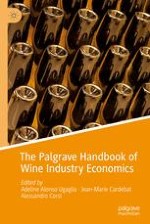2019 | OriginalPaper | Buchkapitel
13. The European Wine Policies: Regulations and Strategies
verfasst von : Paola Corsinovi, Davide Gaeta
Erschienen in: The Palgrave Handbook of Wine Industry Economics
Verlag: Springer International Publishing
Aktivieren Sie unsere intelligente Suche, um passende Fachinhalte oder Patente zu finden.
Wählen Sie Textabschnitte aus um mit Künstlicher Intelligenz passenden Patente zu finden. powered by
Markieren Sie Textabschnitte, um KI-gestützt weitere passende Inhalte zu finden. powered by
